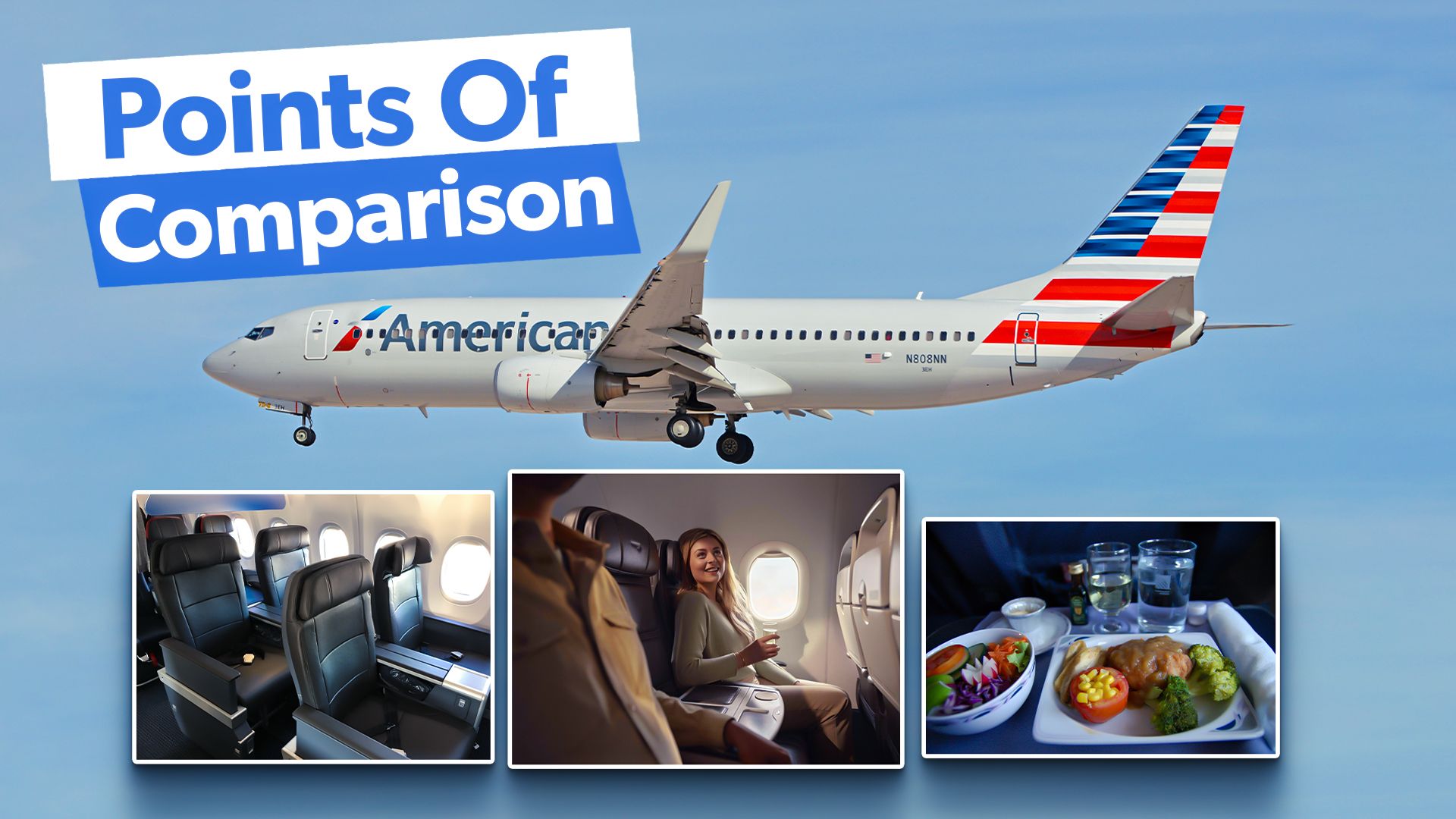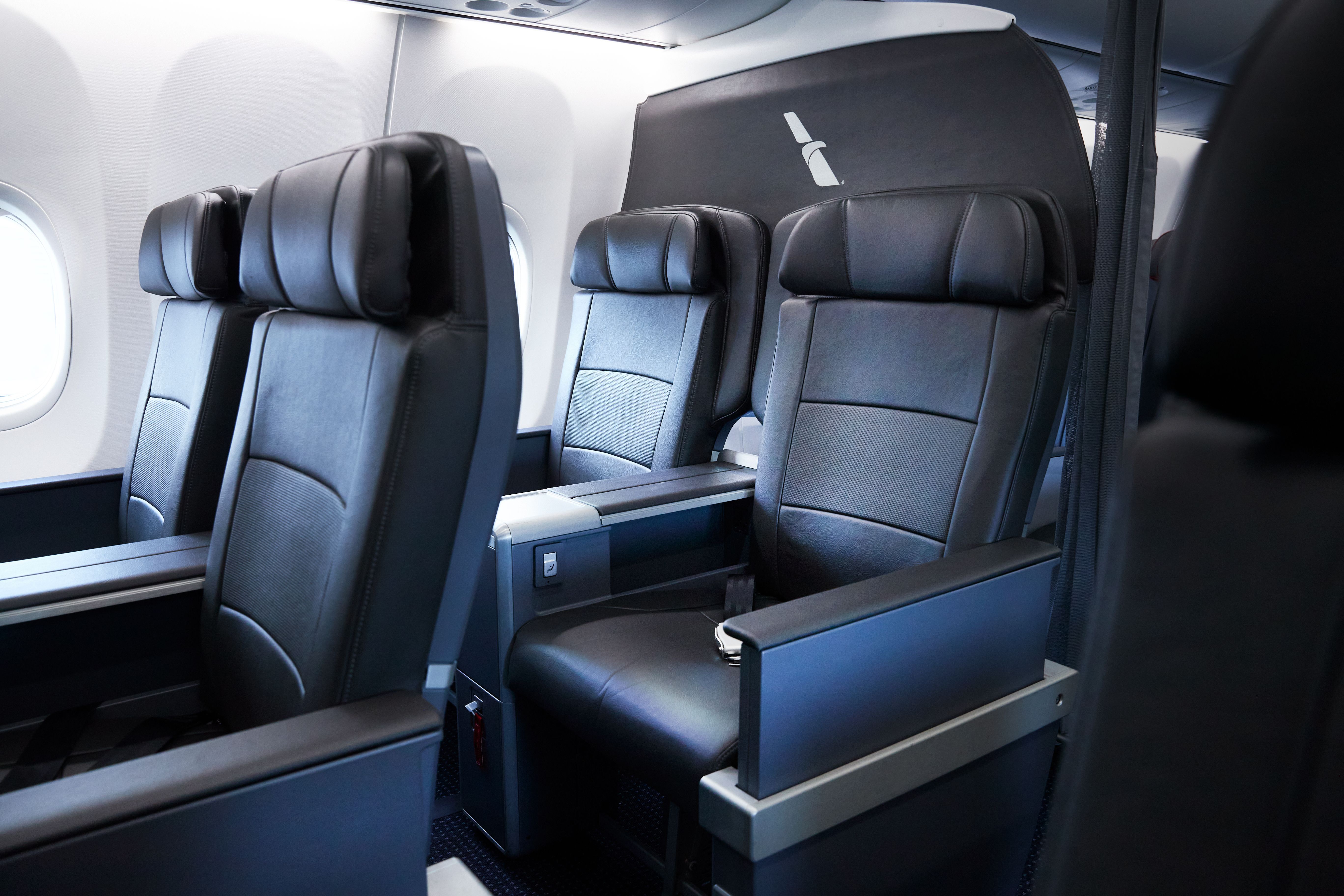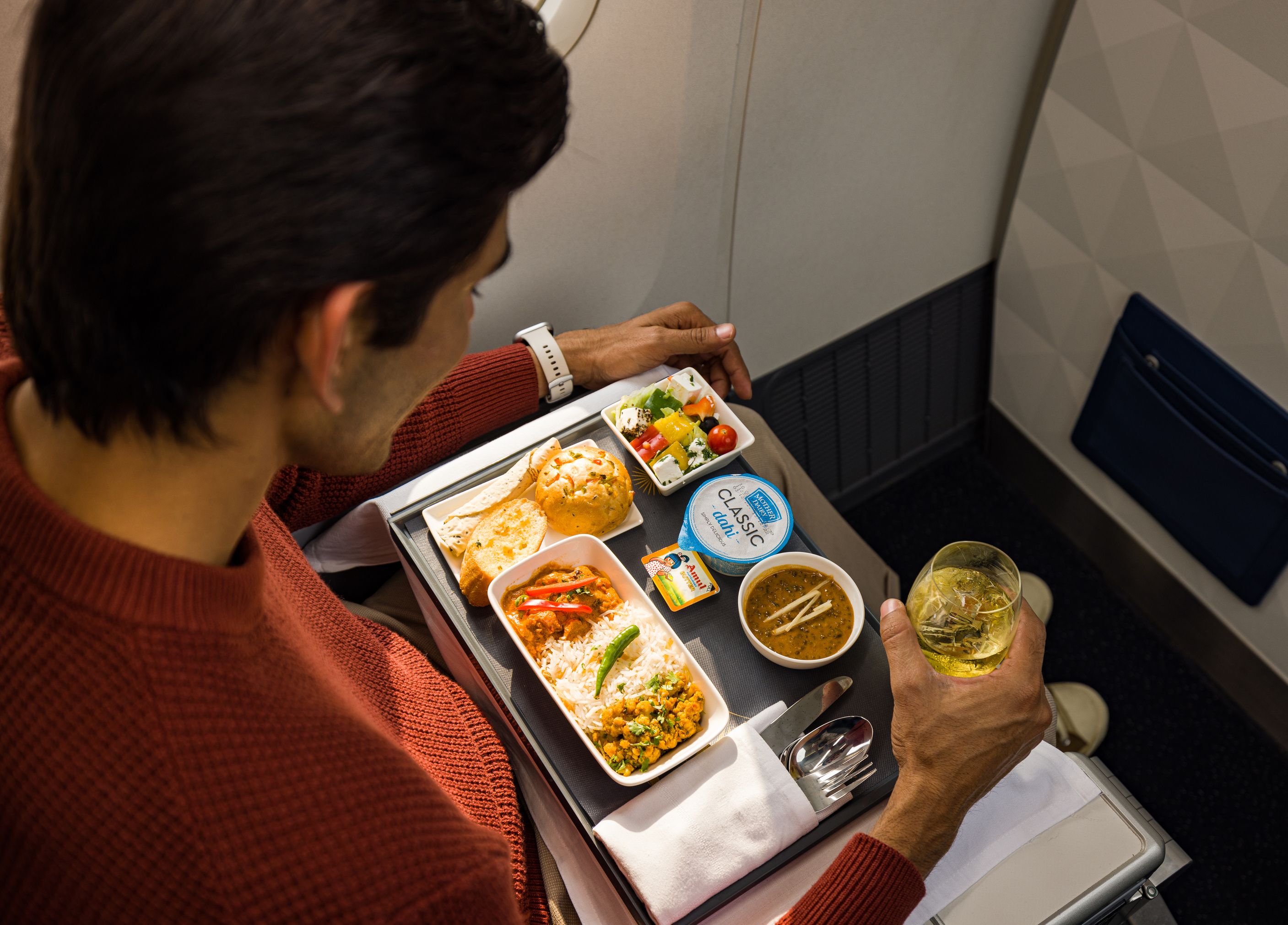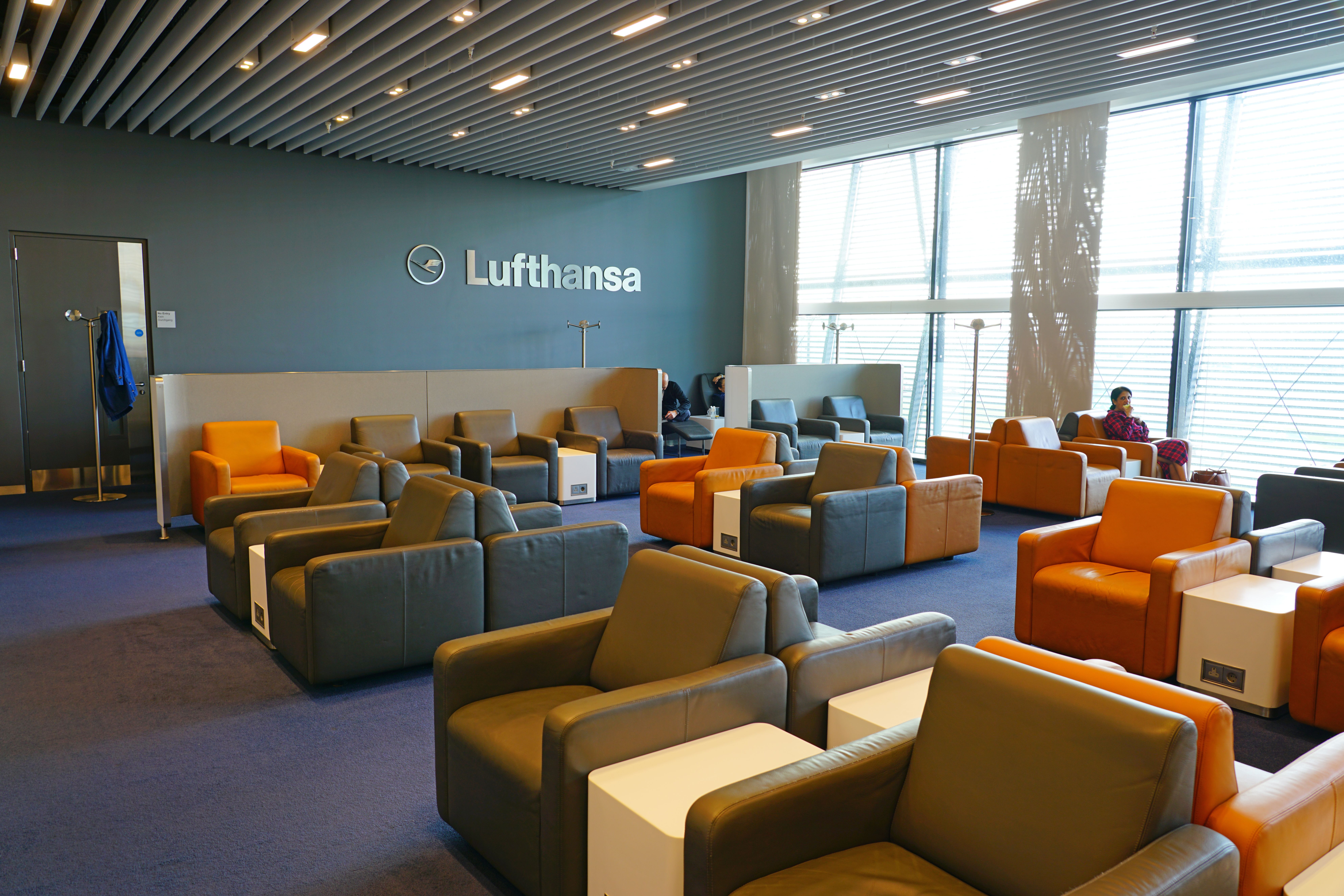5 Things That Differ Between European Short-Haul Business Class & US Domestic First

Summary
- Post-pandemic travel demand has seen premium seats rising in price, but passengers are still willing to pay for the luxury experience.
- European business class prioritizes meal service, while US first class offers wider seats, creating a debate over seat quality.
- US domestic first class lacks quality meals but offers more comfort and privacy.
In the last three years, since travel demand has bounced back following the pandemic, there is no question that more passengers are choosing premium experiences. While the prices of first class and business class seats dipped exceptionally when the pandemic halted the industry, they have now returned to a much more normal range, if not higher in some cases. Despite the expense of being seated at the front of the aircraft, several travelers no longer budge and are fully willing to pay the price. As premium cabins often come with luxurious amenities, such as hot towels and a full meal service, the seats also have a notable difference in space.
Many passengers undoubtedly search for such space in this post-COVID world. However, how much space is really offered? Despite similarities between business class on short-haul flights within Europe and first class flights in the US, there are also drastic differences. Over the years, some European Airlines have adopted premium cabins that seem to be inspired by US domestic first class, whereas others have become a bit more creative – branding a portion of their all-economy cabin layout as “business class.”
The rundown: What’s different?
The differences between each premium experience primarily result in the contrast of demand and passenger trends in the region, as well as the culture. Some key factors to compare include:
- Seat space
- Seat quality
- Meal experience
- Inflight entertainment (IFE)
- Lounge access
|
European Short-Haul Business Class |
US Domestic First Class |
|
|---|---|---|
|
Seats |
Typical 3-3 configuration with blocked middle seat and curtain divider |
2-2 recliner seats with bulkhead divider |
|
Meals |
Most flights |
Only snacks offered on shorter-duration flights (under two hours) |
|
Inflight Entertainment |
Personal device streaming |
Seatback screens |
|
Lounge Access |
Yes |
No |
*This table is a general representation of differences. For specific details, visit individual airline websites.
Perhaps the most striking detail that distinguishes the European short-haul business class experience from US domestic first class is the seat space. According to One Mile At A Time, several airlines in Europe typically block the middle seats on the first few rows of the aircraft’s 3-3 seating configuration. A curtain separates the cabin from the economy cabin, allowing each airline to change the size of business class depending on how many seats are purchased. The experience could be somewhat underwhelming for those from the US, considering it is still a standard economy seat with less legroom.
Photo: Jake Hardiman | Simple Flying
US domestic first class features a seating configuration of only 2-2 and consists of larger recliner seats, similar to what passengers would find in premium economy on long-haul flights operated by widebody aircraft. With these seats, there is undoubtedly more space surrounding the passenger. However, according to a forum on Flyertalk, some users seem divided over the premium class differences.
One passenger who flew on British Airways Club Europe (CE) preferred to fly in US domestic first class instead.
“I find the new CE seats to be at the very limit of tolerability as a business class product,” they explained. “Having an empty seat next to me is nice, but I would much, much rather have a proper F/J seat.”
“Too much emphasis on a wider seat”
The seat quality is another difference and debate. While European short-haul business class often involves the standard economy seat with less cushioning, one traveler explained that some domestic first class seats on American Airlines are not that much more comfortable.
“Sometimes I think the US customer base puts too much emphasis on a wider seat,” they said. “The seats are indeed wider, but in the latest iteration on AA A320/A319 it does not really buy much extra comfort despite the extra width.”
Photo: American Airlines
It is not the first time American has been criticized for designing its cabins with uncomfortable seats. However, its competitors, such as Delta Air Lines and United Airlines, have often been praised for prioritizing seat quality and comfort in their first classes, which can be argued as a step up from European short-haul business class.
The quality of meals, or even lack thereof on US domestic flights, has been a well-known topic for years. Most flyers would agree that Europe succeeds in the meal experience at 35,000 feet. When the pandemic hit, meals became obsolete across the industry, but US airlines were slow to bring them back. While European airlines seem to prioritize meal and beverage service, regardless of length, some travelers argue that the pandemic negatively changed how US carriers cater their flights.
“I was pretty shocked recently when I flew AA First Class (not transcontinental) for the first time in maybe 5 years, and the pre-departure drink service was a tray of plastic cups of warm water,” one Flyertalk user explained.
Photo: Air India
Despite meals returning to US domestic first class on most flights, they are restricted to the duration of the flight and have lacked in quality in some cases. In recent years, Delta has been commended for offering tasty meals with restaurant-quality presentations, while American and United have suffered brutal reviews.
IFE & lounges
Since European short-haul business class is essentially a modified economy cabin, the seats on some airlines do not have seatback screens. This can be a disadvantage for some passengers who wish to stay entertained in that manner, especially in a premium experience branded as business class.
It is also similar to America, where nearly all of its domestic fleet does not have screens. Instead, the airline encourages passengers to stream content to an electronic device, while Delta and United have prioritized seatback screens. Other European airlines, such as Turkish Airlines, have updated their short-haul premium experiences very similar to what is found in US domestic first class.
Lounge access also differs by region. In the States, it is no longer common for a domestic first class ticket to grant access to an airline lounge. Now, passengers must hold a specific frequent-flyer status or have an airline-branded credit card that provides access. In some cases, airlines may offer day passes for purchase, but they are limited to capacity in the lounge. In contrast, European carriers such as British Airways and Lufthansa permit their short-haul business class passengers to enter lounges with their ticket.
Photo: EQRoy | Shutterstock
While all these differences can create quite a debate, they are primarily based on metrics, demand, and flight distance. Several US domestic flights are longer than some short-haul European routes, allowing airlines to not worry about outfitting their narrowbody fleets with a premium class.
Additionally, the culture between the two regions is reflected as many believe the inflight service on European airlines is better than what is experienced on US carriers. One passenger ultimately explained that the experiences are what you make of them and differ depending on the preferences of each passenger, describing as follows:
“I am currently sitting in the lounge about to board a Lufthansa flight in business, and let me say, I am much more looking forward to it than the ‘first’ class flights I took with American a few weeks ago. Unlike the breakfast bar I was given on the American two-hour flight, I will be given a proper meal. I will also have lounge access beforehand, which I didn’t with American. I can also be more confident in being looked after by the cabin crew, unlike any American carrier, where they seem to really believe that they are purely there for your safety. To each their own…”
What do you think about the differences between European short-haul business class and US domestic first class? Let us know by leaving a comment below.
Related
European markets fall and euro soars amid Trump tariff delays
European stock markets have slumped after Donald Trump’s second reversal on tariffs caused deep uncertainty among investors, while the euro was on track for i
European Central Bank cuts interest rates, keeps door ajar to…
Open this photo in gallery:The European Central Bank headquarters, in Frankfurt, Germany, on June 6, 2024.Wolfgang Rattay/ReutersThe European Central Bank cut i
European security, economy without Türkiye ‘impossible,’ says business leader –…
ISTANBUL Türkiye’s strategic importance for Europe's future is both undeniable and multifaceted, encompassing critical areas suc
Westcon-Comstor promotes Rene Klein to lead unified European business
Westcon-Comstor has announced the appointment of Rene Klein as executive vice president for EMEA, tasked with leading the company’s new unified leadership st














